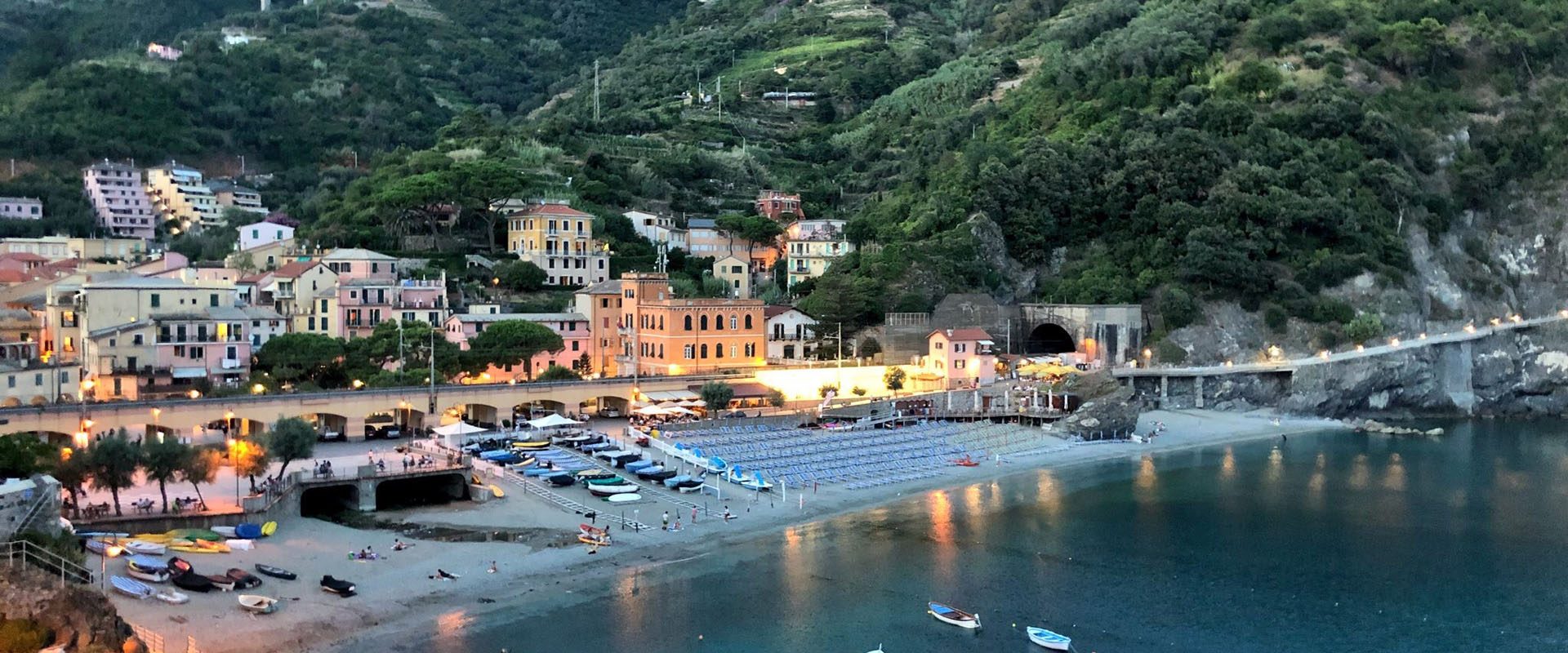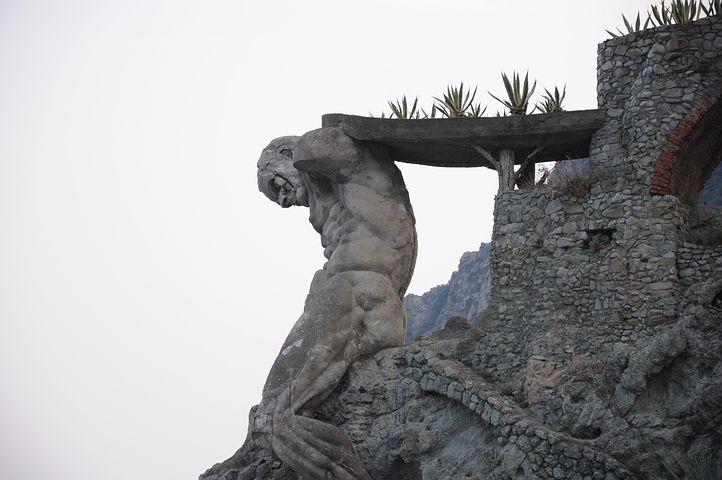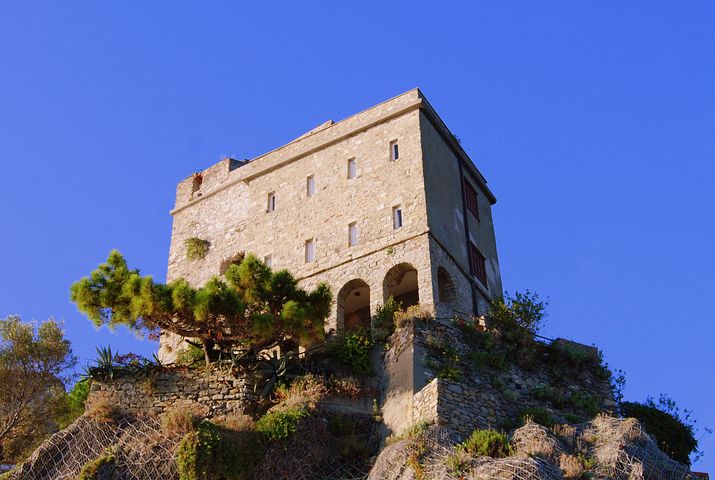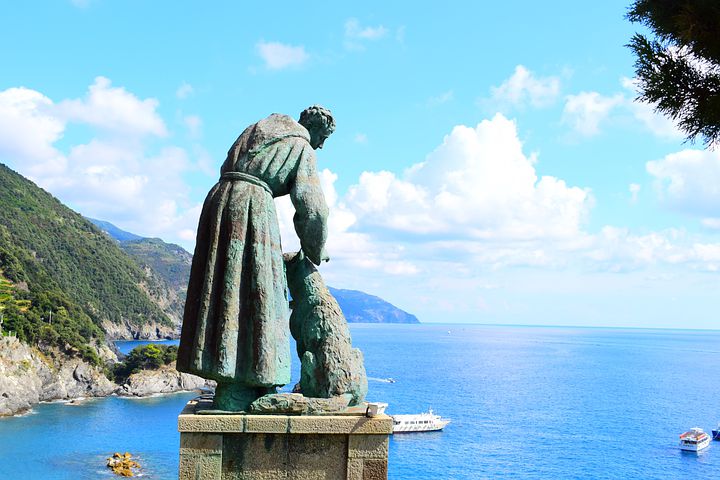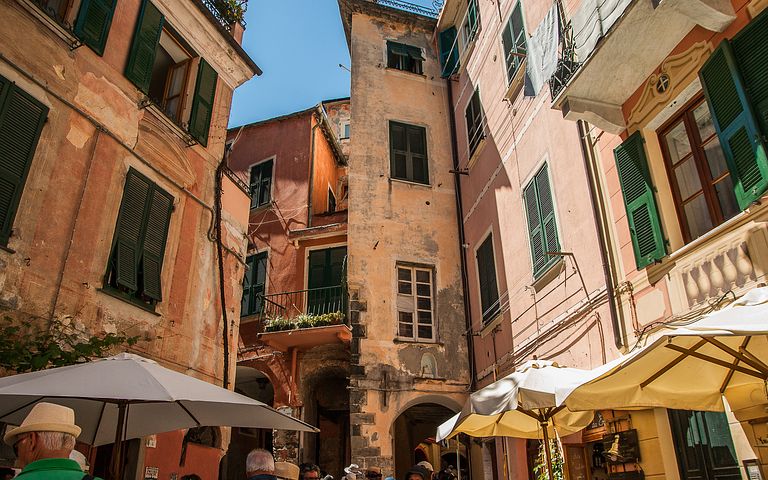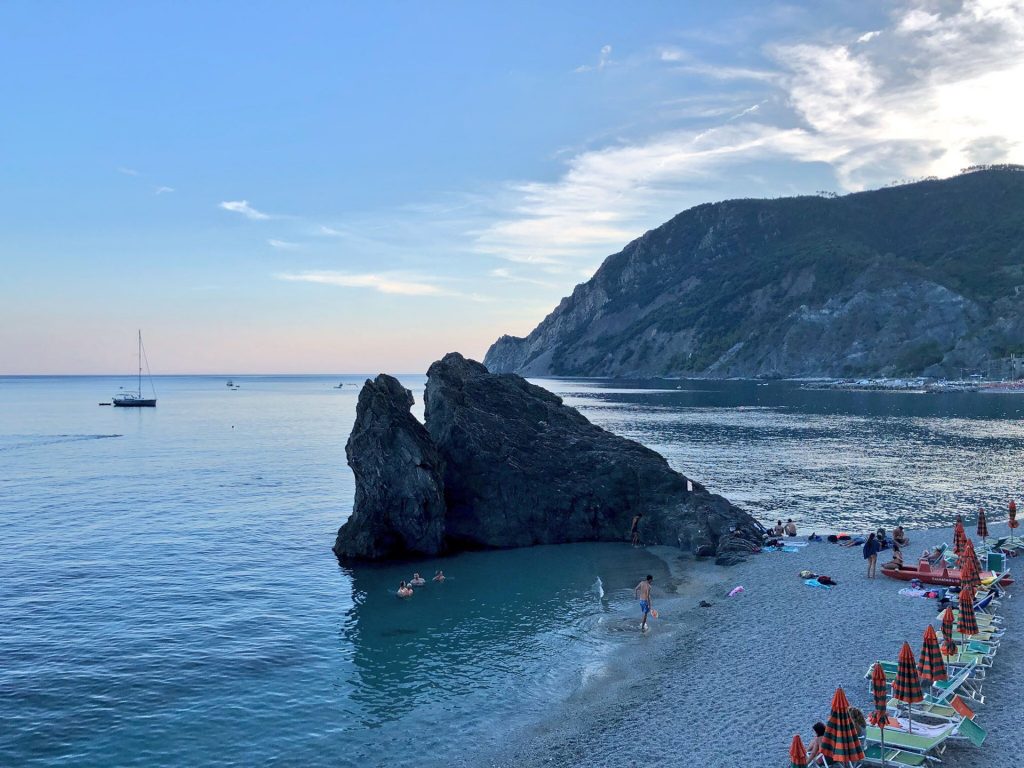Monterosso al Mare, Eugenio Montale’s favorite village, is the fifth of the Cinque Terre starting from the east, the least vertical and the only one also famous for its beach and historic bathing establishments.
The village is made up of a medieval village, Monterosso, and an expansion of the modern era to which it is connected by a very short gallery or by a more panoramic staircase, Fegina, home to the current railway station.
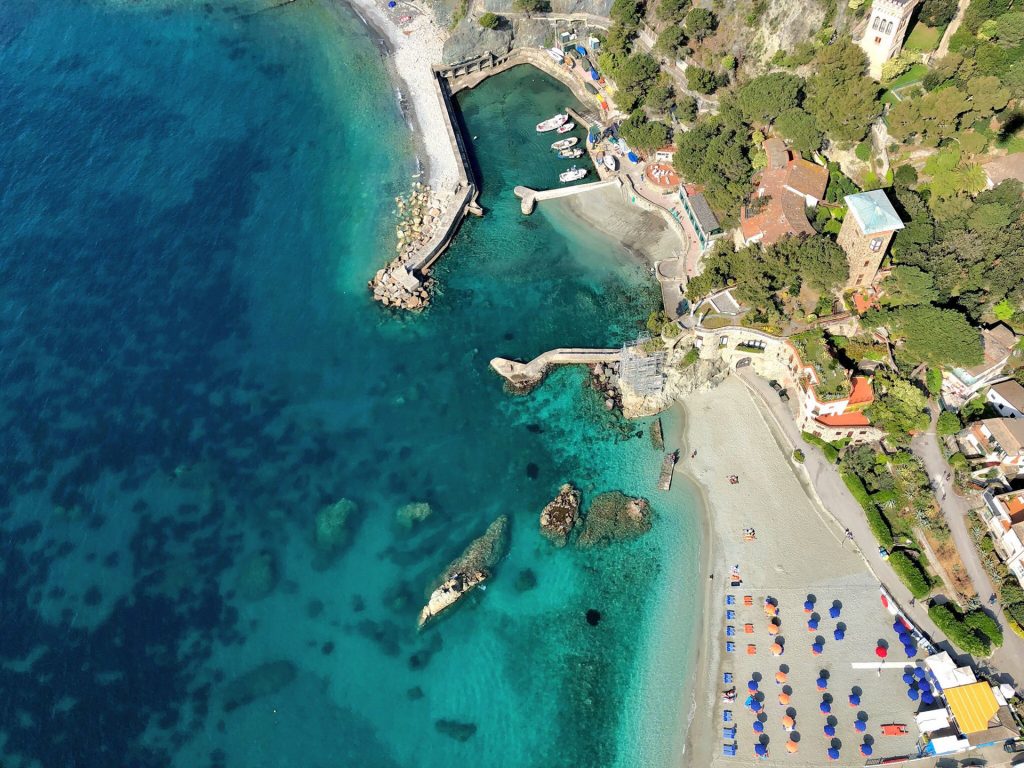
History
According to certain historical sources on the heights of Monterosso, a pre-Roman settlement, Albareto, would have arisen, while the origins of the current village date back to the ninth century, as for Vernazza. The village, Monte Russo, is mentioned in a 1056 Obertenghi accounting document, just before passing under the dominion of the Republic of Genoa, as a fief of the Fieschi and then of the Lords of Lagneto starting from the XII century.
Under Genoa the village became Podesteria of the Capitanate of Levanto, knowing a great commercial and economic development, like the other villages of the coast, with which it also shares its modern history.
What to see in Monterosso
In addition to wandering among the alleys and the colorful shops, in Monterosso, you can not miss the Church of San Giovanni Battista, in the heart of the old village, in Genoese Gothic style and dating from the first half of the thirteenth century, with the typical facade in bichrome vestment and the imposing bell tower located between the apse and the entrance.
A few steps from there stands the Oratorio della Confraternita dei Neri ‘Mortis et Orationis‘ of the 16th century, in Baroque style and a little further away the Oratorio della Confraternita dei Bianchi or Santa Croce.
Reaching the hill of San Cristoforo you will find the Convent of the Capuchin Friars, one of the “Places of the Heart” of the FAI, and the Church of San Francesco, from the beginning of the 17th century, with a Crucifixion attributed to Van Dick.
Walking back down to the sea you can see the statue of San Francesco and Torre Aurora, today a trendy restaurant-bar in an extremely panoramic and romantic position. The tower dates from the sixteenth century and is a testament to the important defensive system of the village.
Leaving Monterosso for Fegina, at the western end of the promenade, stands the famous statue of the Giant, a 14-meter-high restored Neptune.
The Eugenio Montale Literary Park
The Eugenio Montale Literary Park, strongly desired by the Cinque Terre National Park, the Dante Alighieri Society, and the local administration, was born on the occasion of the 40th anniversary of the literature Nobel Prize to the poet, to revive the emotions he experienced in Monterosso and transmitted through his verses. The symbol of this literary park is the yellowish pagoda or house of the two palm trees, the poet’s summer residence on the Fegina promenade.
Meriggiare pallido e assorto Presso un rovente muro d’orto, ascoltare tra i pruni e gli sterpi schiocchi di merli, frusci di serpi…
The Park and the municipality organize guided walks along a naturalistic-literary path loved by Montale, which allows you to discover the beauty of Monterosso and the landscape that surrounds it, including Ossi di seppia, Mediterraneo, La Punta del Mesco, I limoni and Meriggi d’ombre.


